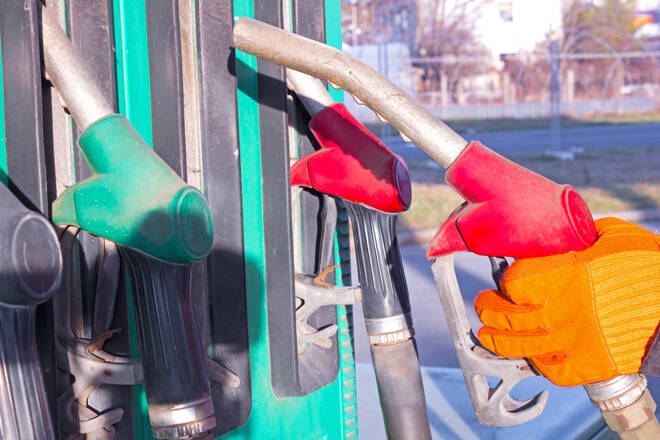Advertisement
Advertisement
Gasoline Markets Stay Bullish Ahead Of The Driving Season
By:
Demand stays strong despite record prices.
Key Insights
- Gasoline prices are near record levels ahead of the driving season.
- Crude oil prices continue to move higher, which is bullish for the gasoline market.
- Consumers keep buying despite record prices, indicating that gasoline markets can move even higher.
The U.S. driving season is about to begin, and gasoline prices are near all-time high levels. Consumers are worried about high prices, but it looks that the current bullish trend could be continued in the summer.
Rising Oil Prices Push Gasoline Prices To New Highs
According to EIA, the price of crude oil is responsible for 60% of the regular gasoline price. Currently, WTI oil is moving towards the $115 level. Before this year, such price levels were last seen back in 2008, ahead of the financial crisis.
The recent price spike was triggered by sanctions on Russia and the subsequent decline of Russia’s oil exports. It should be noted that prices have been trending higher before these events due to multi-year underinvestment in the oil industry. This problem is not going away anytime soon even if oil companies start investing heavily due to the long-term nature of oil projects, so the general trend in the oil markets remains bullish.
Meanwhile, demand for gasoline remains strong despite high prices. This demand will increase further when the driving season begins.
What’s Next For Gasoline Prices?
Fundamentals remain bullish. Oil prices keep moving higher, while total motor gasoline stocks are down by 5.5% on a year-over-year basis. Refineries are trying to increase production, but it remains to be seen whether it will be sufficient enough to curb prices.
At this point, it looks that the price ceiling would be determined on the demand side. At current prices, demand stays strong, which indicates that consumers are ready to drive despite the rising costs, which is bullish for gasoline markets.
To keep up with the latest earnings updates, visit our earnings calendar.
About the Author
Vladimir Zernovauthor
Vladimir is an independent trader, with over 18 years of experience in the financial markets. His expertise spans a wide range of instruments like stocks, futures, forex, indices, and commodities, forecasting both long-term and short-term market movements.
Did you find this article useful?
Latest news and analysis
Advertisement
